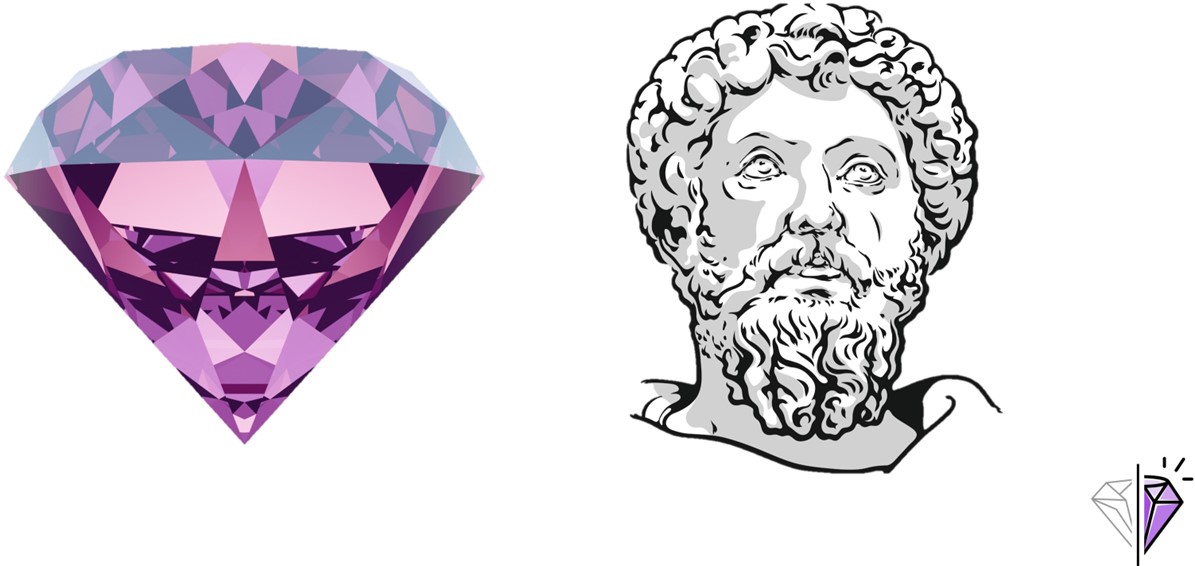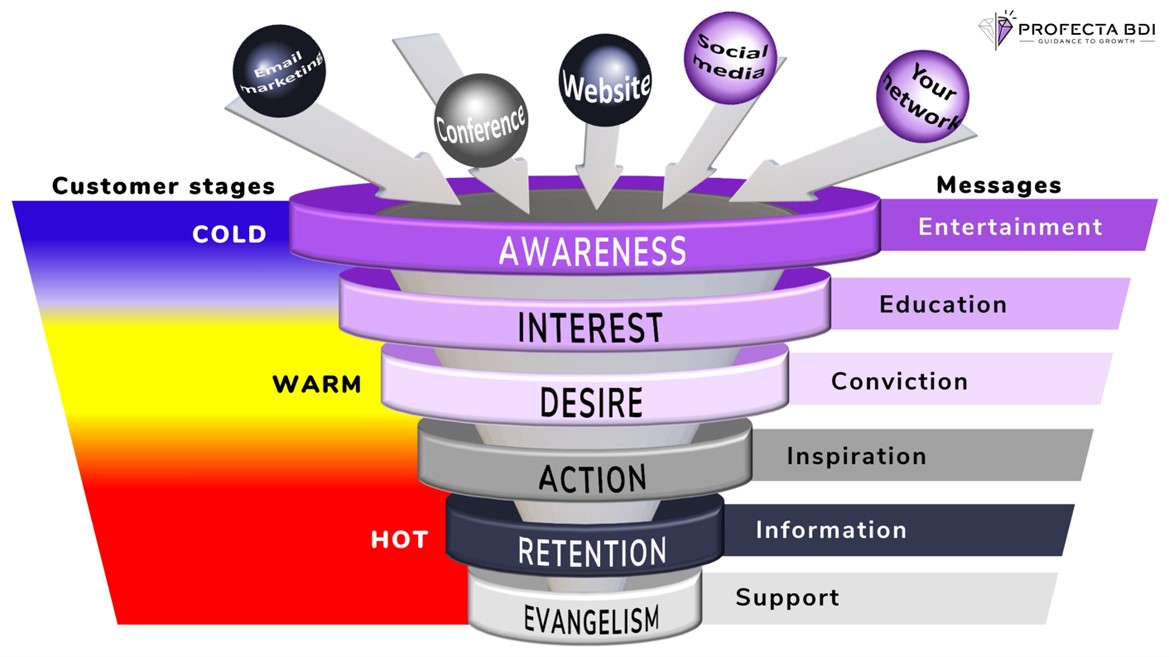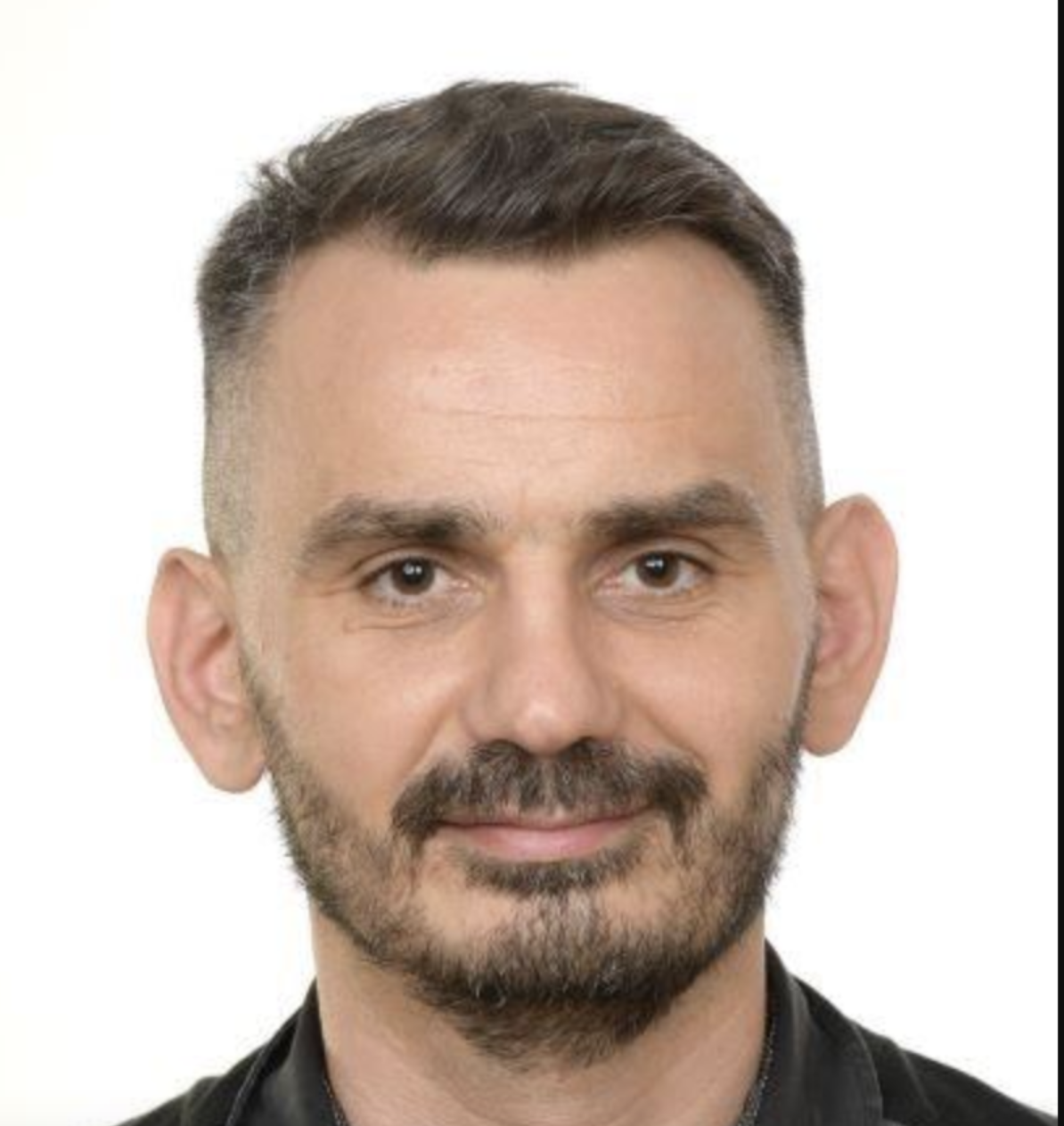- Home
- Resource Center
- Articles & Videos
- Crucial Marketing Concepts That Really Work
4 September 2023
| by PROFECTA BDI
Crucial Marketing Concepts That Really Work

Sign up for our newsletter on globalization and localization matters.
In the fast-paced world of LSPs, where often translation projects come and go like on a conveyor belt, it may be difficult to squeeze in marketing, especially if no employee has enough experience or expertise. However, marketing is one of the four legs of the table that hold your business together.

So, this article will help you learn the crucial marketing concepts that many people struggle with and implement them immediately. No LinkedIn algorithms, ChatGPT, Google Ads or email campaigns will really help if you don’t apply these concepts properly.
Confidence in your marketing skills
Plus, you'll feel confident because you're using proven strategies when you design unique marketing communications that work. As a result, your clients will make progress because you contributed to their success. And they'll come back to you and recommend you further. That's a perfect scenario, right? Admittedly, easier said than done, but you can achieve it if you consistently apply the strategies explained here.
The crucial three marketing concepts in this article
So, let’s get down to business. We’re going to get into the:
1. “Holy Trinity” of your dear client
2. Your irresistible offer
3. A sales funnel that works.
And, of course, how you use them in your marketing communications on your website, social media, e-mail campaigns, etc.
The “Holy Trinity” of marketing
Above all, we should be aware that our business exists only because of our clients. And not because we are competent and friendly and have so much to offer the world. That’s why we need to find out so many things about the valued client who is willing to pay exactly for our services and not someone else’s. I like to call it the “Holy Trinity” of our dear clients:
1. Client’s needs
2. Client’s values and philosophy
3. Client’s language
The six needs for your success
Therefore, marketing success starts with needs, what they are exactly in the context, and what you can do to satisfy them. Here I use the six human needs categorized by Tony Robbins that can be equally applied to legal entities:
1. Certainty
2. Variety
3. Importance
4. Connection
5. Growth
6. Contribution
But you can also use the traditional Maslow’s hierarchy of needs if you prefer it.
Needs vs. values vs. principles
Before we begin, consider that needs often take precedence over values and principles. For example, if someone places a high value on honesty, they might even lie in the job interview if they must survive.
Quick Needs Assessment
To simplify the process, you can use the Quick Needs Assessment and Quick Needs Application frameworks described below. This way, you can find out what your company and current and/or future clients’ needs are and how you can put them into practice.
Why yours, too? Knowing exactly how your company’s needs are being met will also help you better assess what your client really needs. And when you know how to satisfy the needs, you can present them to your existing and potential clients.
The initial analysis
For the initial analysis, you can use your current client in the Quick Needs Assessment (Table 1) because it's easier. For future clients, you can create your own buyer personas, which are semi-fictional representations of your ideal clients based on market research and real data about people, organizations or companies. Just a quick tip on this: If you have a drawing or a puppet in front of you that represents your buyer persona, it can help you focus on the right words instead of just writing without help.
Table 1 Quick Need Assessment
| a. No | b. Needs keywords and examples | c. How are your needs satisfied in a specific context? | d. How can you satisfy your client's needs? |
| 1 | Certainty, safety, comfort | ||
| 2 | Uncertainty, variety, diversity | ||
| 3 | Significance, importance, uniqueness | ||
| 4 | Connection, love, belongingness | ||
| 5 | Growth, expansion, development | ||
| 6 | Contribution, help, support |
So, the steps are as follows:
1. Brainstorm each need and be clear about how exactly you meet the need in your business context, for example, in your relationship with freelancers. Write down your findings in column c to get a sense of how it works.
2. In terms of your client’s six needs, ask yourself what actions you are or are not taking, how you can make progress in meeting a need, and which needs have higher priority. Record your findings in column d.
3. Analyze your findings in the context of your marketing.
Quick Needs Application
Then you can apply the findings in the Quick Needs Application framework as exemplified in Table 2.
Table 2 Quick Needs Application
| Needs | What needs to your clients have? | How can you apply it in your marketing? |
| Certainty | Seek assurance that your translation services are accurate, reliable, and consistent. | Highlight your team's expertise and accuracy in delivering reliable translations. |
| Variety | Want a wide range of language solutions that cater to various contexts and industries. | Showcase the breadth of languages and industries your LSP covers, demonstrating adaptability. |
| Importance | Desire to feel important and understood, expecting personalized communication and tailored solutions. | Personalize communication, addressing clients' specific challenges and showcasing how your services meet their unique needs. |
| Connection | Value meaningful interactions and partnerships, seeking an LSP that understands their unique communication requirements. | Emphasize your team's commitment to building lasting relationships and facilitating meaningful connections. |
| Growth | Look for services that help them expand their reach, connecting them to new markets and opportunities. | Look for services that help them expand their reach, connecting them to new markets and opportunities. |
| Contribution | conversation, and your LSP can empower them by breaking down language barriers. | Share stories that highlight how your services have contributed to global understanding and collaboration. |
Values and philosophy in marketing

Now that the first part of the “Holy Trinity” has been addressed, it is time for the client’s values and philosophy. This is also extremely important to understand because you need to constantly add value to your clients to maintain long-term relationships. And of course, you can apply value-based pricing.
So what is value in this business context? It's a general term for something that's very important to your clients, like innovation, transparency, honesty, open communication, accountability, etc.
A simple way to figure out value is to first ask yourself the following questions:
1. What is sacred to my clients?
2. What is non-negotiable for them?
3. What would they fight for no matter what?
Values increase prices of your services
Afterward, ask your clients in a survey why translations are important to them. Once you know what your clients really value, you can find marketing solutions showing how translations support their values. For example, if they value innovation and transparency, you can find out how translation services support their innovation. Combine this with what they value most about translations.
Then package your marketing communication in a simple and inspiring way. For example, if your clients are start-ups and you offer translations for all EU language combinations, you can say:
Why shouldn’t all EU countries benefit from your innovative solutions when you address their citizens in a language close to their hearts? We have proven and unique methods to reach hearts and minds with words.
In this way, you place yourself as the solution provider in the context of their need for growth, importance, and contribution. And you emphasize their value of innovation while showing the benefits of transcreation, for example. And you position yourself as an experienced and trusted solution provider. To what extent will your price be the most important criterion in deciding whether to work with you?
Philosophy is not dead
Client philosophy is a set of beliefs and principles that your clients follow to be successful. An easy way to find out your clients' philosophy is to ask the following questions:
1. What are their key business principles?
2. What do they really believe in?
3. How do they perceive success?
You can find this out from their website, blog, LinkedIn posts or articles and the like, or simply ask them. Then apply the findings to your marketing communications by making your client the hero of your stories and explaining how you help them live their philosophy.
3rd part of the “Holy Trinity”
Translators often like to use words such as localization, post-editing, TEP when talking with prospects or clients. But almost nobody understands these words. Therefore you should use the jargon of the representatives of your client because they will feel your empathy and authority for the job.
For example, if you talk to the marketing manager, state how translations fit in the “expansion in new geographies”, “go-to-market strategies” and the like. If you talk to an IT guy, stress the importance of translation “in the big data analysis”, “agile project management”, etc. When you talk to your dentist, do you understand words such as occlusal or bruxism?
Create an irresistible offer
If you know exactly the “Holy Trinity” of your dear clients, it's time to create or reformulate your irresistible offer to make your business more profitable. I would suggest you do a simple brainstorm and ask your team just three questions:
1. What do you really love to do?
2. What are you guys really good at?
3. What do you have experience in?
Then tell them to answer as many activities as they can that relate to your business processes, but also some special skills they don’t normally use in your business, hobbies, and such. Have them rate their answers from 1 to 10. At the end, you'll summarize all the activities that were rated 10 in one document.
This will give you a fantastic insight into what to focus on in your offering. Also try to figure out how they can combine their hobbies with business, e.g. watching Netflix with storytelling, cooking with writing clear instructions, etc. Put it in your irresistible offers and just ask yourself who wouldn’t want to work with people who do what they like, they are really good at, and where they are experienced.
Put it all in your sales funnel
The final point for this article is to strategically prepare a sales funnel. A sales funnel shows your clients’ entire journey with you, from the point they hear from you to the sale of your translation. In marketing terms, from lead generation and nurturing to paying clients.

However, this article cannot be too long. If you want, you can learn more about a sales funnel specifically for translation services in the blog post How to start selling your translation services.
Consistency and innovation rule the world
One last thought. As you build your marketing strategies, remember that consistency is key. Consistency builds trust and makes your LSP a reliable choice in a highly competitive market. But it's also important to be innovative. Keep up with the latest marketing trends, such as content marketing, social media engagement, and influencer partnerships, to keep your brand fresh and attractive.
Good luck growing your translation business based on value! Enjoy your marketing activities!

Zoran Metikoš
I help language service providers (LSPs) grow as businesses and their employees grow as professionals by providing unique business development consulting and growth mindset coaching for executives and middle managers. My company, Profecta BDI, not only helps LSPs find new clients, but also grow as companies, professionals and individuals. The stability of the company and a good corporate culture are the foundation for growth. After graduating in Linguistics and Translation in 2003, I started working as a translator and translation tool trainer in SAP localization and eventually worked as a project coordinator, business developer and operations manager at LSPs for 17 years until 2020. After completing my MBA at the School of Business and Economics in 2015, I came up with the idea of helping many LSPs grow and learn how to develop as businesses and professionals. I'm also a certified professional coach and NLP Master Practitioner.


